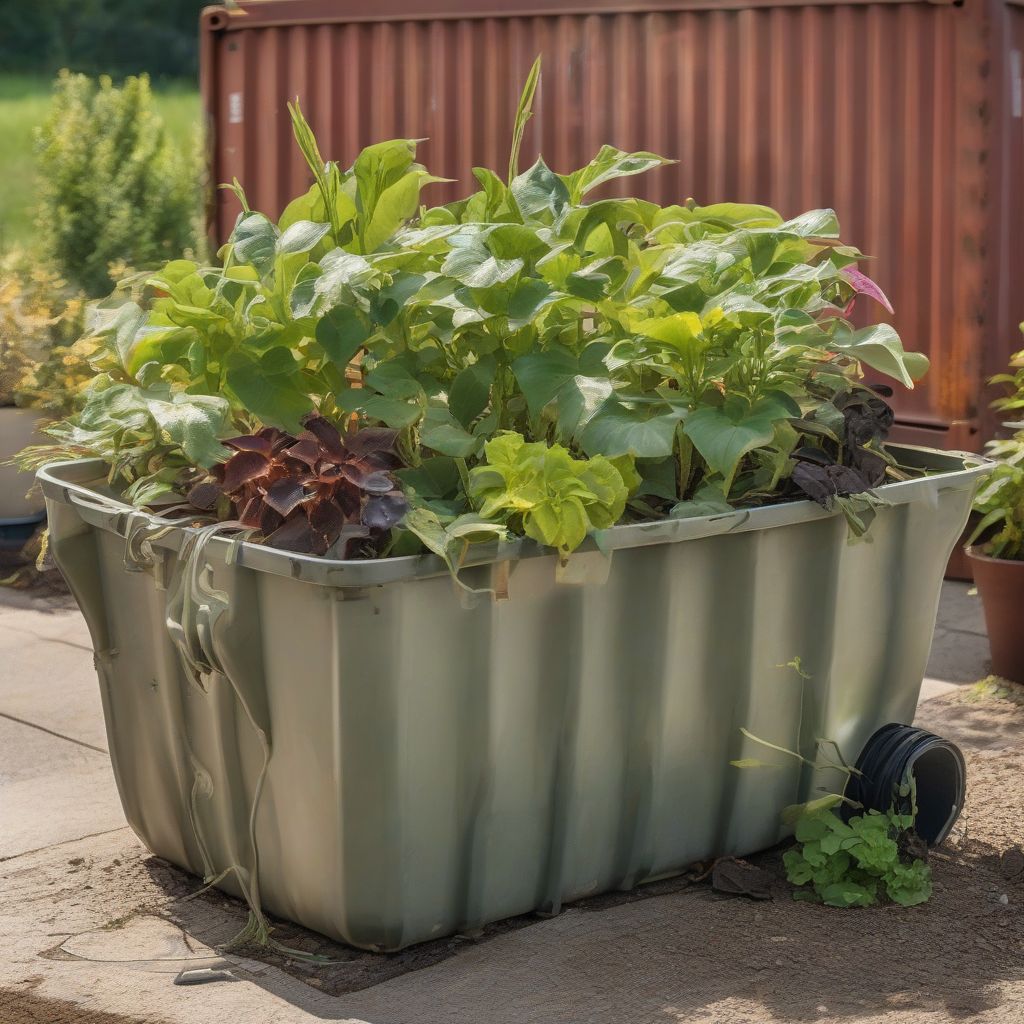Picture this: you’re tending to your lush container garden, the sun is beaming down, and your plants seem happy. But beneath the surface, a silent killer lurks—overwatering. Just like us, plants need a balance of air and water to thrive. Too much water can suffocate their roots, leading to a whole host of problems and even plant death.
As a nutritionist and meal-prep coach, I know a thing or two about finding that perfect balance. Just as we carefully portion our meals for optimal health, our container gardens need a measured approach to watering. The good news is, with a few simple tips and tricks, you can prevent overwatering and keep your container garden flourishing. Let’s dive into the how-to of keeping your plants happy and hydrated!
Understanding the Risks of Overwatering
Before we jump into prevention, it’s crucial to understand why overwatering is so detrimental. When soil remains overly wet for prolonged periods, it creates an environment where harmful bacteria and fungi thrive. These unwelcome guests can damage roots, inhibiting their ability to absorb nutrients and water effectively—a recipe for disaster for your beloved plants.
Overwatering also leads to a condition called root rot, where roots essentially drown and begin to decay. Signs your plant might be suffering from overwatering include wilting (yes, even with too much water!), yellowing leaves, stunted growth, and a sour smell emanating from the soil.
10 Tips to Prevent Overwatering in Container Gardens
Ready to become a container watering pro? Follow these tips, and your plants will reward you with vibrant health and abundant blooms!
1. Choose the Right Container
This is ground zero (or should we say, pot zero?) for success. Opt for containers with adequate drainage holes. This allows excess water to escape, preventing waterlogged soil. If you fall in love with a pot without drainage, you can always drill holes yourself.
2. Potting Mix Matters
Don’t skimp on the foundation! Use a well-draining potting mix specifically designed for containers. Avoid using garden soil, which tends to be heavier and retains too much moisture in pots.
3. The Finger Test: Your Trusty Tool
Forget fancy gadgets; your finger is the best moisture meter around! Stick your finger about an inch deep into the soil. If it feels dry, it’s time to water. If it feels moist, hold back and check again in a day or two.
4. Water Deeply, Less Often
When you water, give your plants a thorough soaking until water drains from the bottom. This encourages roots to grow deeper and strengthens the plant. Watering deeply less often is much better than frequent, shallow watering.
5. Know Your Plants’ Needs
Different plants have different water requirements. Research the specific needs of your plants and group those with similar watering needs together. This makes it easier to tailor your watering schedule accordingly.
6. Consider the Weather
Hot, windy conditions will dry out soil faster, requiring more frequent watering. On the other hand, during cooler periods or rainy days, you can significantly reduce watering frequency.
7. Don’t Be Afraid to Let Them Dry Out
Most plants benefit from a slight drying out period between waterings. This allows air pockets to form in the soil, which is essential for healthy root development.
8. Mulch is Your Ally
Adding a layer of mulch, like bark chips or pebbles, around the base of your plants helps retain moisture and regulates soil temperature, reducing evaporation.
9. Monitor for Signs of Overwatering
Regularly inspect your plants for any signs of overwatering mentioned earlier. Early detection is key to preventing irreversible damage.
10. Amend When Necessary
If you suspect overwatering, you can try to salvage your plant by gently removing it from the pot, inspecting the roots, and repotting it with fresh, well-draining soil. Trim any mushy or brown roots before repotting.
 Overwatering Signs in Container Gardens
Overwatering Signs in Container Gardens
Conclusion
Mastering the art of watering is crucial for the success of your container garden. By understanding the risks of overwatering and implementing these practical tips, you can ensure your plants thrive in their pots. Remember, a little observation and a touch of intuition go a long way.
Now that you’re armed with this watering wisdom, get ready to enjoy a bountiful and beautiful container garden! What are your favorite container gardening tips? Share them in the comments below!
[amazon bestseller=”container gardening”]
